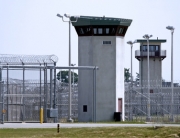The old Monterey County jail in Salinas has been a big topic of discussion over the last few decades.
It has mostly been abandoned and in disrepair for the last 30 years and county officials have wondered what to do with the historic piece of architecture.
The old Salinas jail is well-known; it was where farm labor rights leader Cesar Chavez spent three weeks for refusing to stop a boycott against Bud Antle lettuce with fellow United Farm Workers in the 1970s.
Even during that period, the jail was in disgraceful shape. Chavez described it as being “poorly lit” and “very cold and damp,” and that the county needed to build a new one.
Now, more than forty years later, the jail still stands but no one is quite sure what to do with it.
The Architectural Heritage Association of Monterey County has pushed to have the building preserved and in 2004 the old jail was listed on the National Register of Historic Places. This put a stop to plans to have the building demolished.
County supervisors granted approval to a San Francisco-based consulting firm last December to conduct a study that will help find an alternative use for the jail. This study, being done by Page and Turnbull, will cost $120,000 and includes collecting input from the public on preferred options. It also includes a full environmental impact report.
The inside of the old Monterey County Jail has been closed to the public for many years. Members of the Architectural Heritage Association and the Salinas historic resources board hope that much of the old jail may be preserved for the community.
A museum dedicated to Chavez as well as the farm labor movement is one possible option. Using much of the old building for county use and storage is another.
There have also been talks of demolishing only a portion of the old building to create a plaza and preserving the rest as a historical display on Chavez and also some county offices.
The county has spent $187,000 to weatherize and repair the roof on the building in order to prevent further water damage until a decision has been made.
















Follow Us
Facebook
Twitter
Google +1
LinkedIn
Youtube